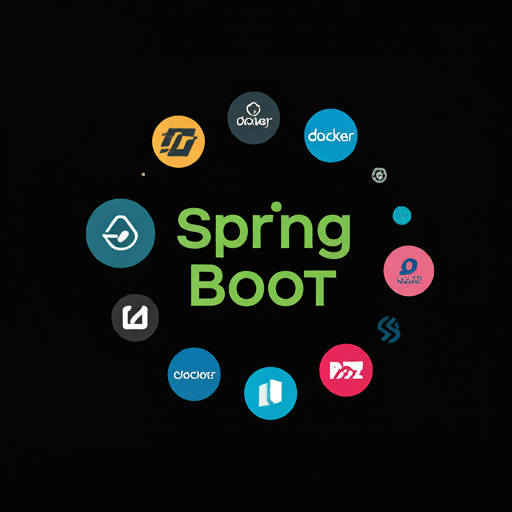The rapid evolution of technology and the increasing demand for scalable, flexible, and cost-effective software solutions have led to a surge in the adoption of Software-as-a-Service (SaaS) models. SaaS applications, delivered over the internet as a service, offer numerous benefits, including reduced upfront costs, faster deployment, and easier maintenance. To effectively develop and deliver SaaS applications, organizations are turning to modern development methodologies like Agile and cloud-native architectures.
A White Paper on SaaS Development in Cloud-Native Applications: Agile Full-Stack Java Development with BDD and Spring Boot
Introduction
The rapid evolution of technology and the increasing demand for scalable, flexible, and cost-effective software solutions have led to a surge in the adoption of Software-as-a-Service (SaaS) models. SaaS applications, delivered over the internet as a service, offer numerous benefits, including reduced upfront costs, faster deployment, and easier maintenance. To effectively develop and deliver SaaS applications, organizations are turning to modern development methodologies like Agile and cloud-native architectures.
This white paper explores the intersection of Agile, full-stack Java development, Behavior-Driven Development (BDD), and Spring Boot within the context of SaaS development in cloud-native applications. We will discuss the key principles and practices of each of these components and how they can be combined to create high-quality, scalable, and maintainable SaaS solutions.
Agile Methodology
Agile methodologies, such as Scrum and Kanban, emphasize iterative development, collaboration, and customer satisfaction. Key principles of Agile include:
-
Iterative development: Breaking down projects into smaller iterations or sprints to deliver working software incrementally.
-
Collaboration: Fostering teamwork and communication among stakeholders, including developers, testers, and product owners.
-
Customer satisfaction: Prioritizing the needs and feedback of end-users to deliver value.
-
Flexibility: Adapting to changing requirements and market conditions.
Full-Stack Java Development
Full-stack Java development involves working across the entire technology stack, from the front-end user interface to the back-end database. This approach offers several advantages, including:
-
Comprehensive understanding: Developers gain a deep understanding of the entire application architecture.
-
Improved efficiency: Reduced communication overhead and faster development cycles.
-
Versatility: Ability to work on various components of the application.
Behavior-Driven Development (BDD)
BDD is a collaborative approach to software development that focuses on defining the desired behavior of the application from the perspective of the end-user. BDD involves writing executable specifications in a human-readable language, such as Gherkin, that can be automated for testing. Key benefits of BDD include:
-
Shared understanding: Ensures that all stakeholders have a common understanding of the requirements.
-
Early validation: Identifies potential issues early in the development process.
-
Improved quality: Reduces the risk of defects and ensures that the application meets user expectations.
Spring Boot
Spring Boot is a popular framework that simplifies the development of Spring-based applications. It provides a quick start experience, automates configuration, and offers a wide range of features, including:
-
Convention over configuration: Reduces boilerplate code and simplifies development.
-
Embedded servers: Allows for easy deployment and testing.
-
Actuators: Provides insights into the application's health and performance.
-
Starter dependencies: Simplifies project setup by providing pre-configured dependencies.
Combining Agile, Full-Stack Java, BDD, and Spring Boot for SaaS Development
To effectively develop SaaS applications using these components, consider the following best practices:
-
Define clear business objectives: Establish a shared vision for the SaaS application and align development efforts with business goals.
-
Embrace a continuous delivery pipeline: Automate the build, test, and deployment processes to enable rapid delivery of new features.
-
Leverage cloud-native technologies: Utilize cloud-based infrastructure and services to achieve scalability, flexibility, and cost-efficiency.
-
Prioritize security and compliance: Implement robust security measures and ensure compliance with relevant regulations.
-
Monitor and optimize performance: Continuously monitor the application's performance and make necessary optimizations.
-
Foster a culture of innovation: Encourage experimentation and learning to drive continuous improvement.
Conclusion
By combining Agile, full-stack Java development, BDD, and Spring Boot, organizations can develop high-quality, scalable, and maintainable SaaS applications. This approach provides a solid foundation for building successful SaaS businesses in today's competitive market.
References
General References:
-
Agile Manifesto: https://agilemanifesto.org/
-
Spring Boot Documentation: https://docs.spring.io/spring-boot/documentation.html
-
BDD in Action: https://www.amazon.com/BDD-Action-Behavior-driven-development-lifecycle/dp/161729165X
Specific References (Add as needed):
-
[Book or article on full-stack Java development]
-
[Research paper on cloud-native architectures]
-
[Case study of a successful SaaS application]
-
[White paper on security best practices for SaaS applications]
Note: You can replace the placeholders with specific references that are relevant to your content and audience.
References
Agile Methodology:
-
Agile Manifesto: https://agilemanifesto.org/
-
Scrum Guide: https://www.scrum.org/resources/scrum-guide
-
Kanban Guide: https://kanbanguides.org/
Behavior-Driven Development (BDD):
-
BDD in Action: https://www.amazon.com/BDD-Action-Behavior-driven-development-lifecycle/dp/161729165X
-
Cucumber Documentation: https://cucumber.io/
-
SpecFlow Documentation: https://docs.specflow.org/
Collaborative and User-Centric Approaches:
-
Design Thinking: https://www.interaction-design.org/literature/article/5-stages-in-the-design-thinking-process
-
User Experience (UX) Design: https://designlab.com/blog/what-is-the-ux-design-process
-
Human-Centered Design: https://online.hbs.edu/blog/post/what-is-human-centered-design
Additional Resources:
-
Agile Alliance: https://www.agilealliance.org/
-
Agile Testing: https://agiletestingdays.com/
-
BDD Community: https://medium.com/@samaddico/what-is-bdd-and-why-936e80bce511
Note: Contact ias-research.com for details.
